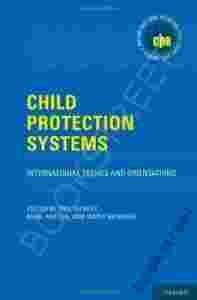|
Child Protection Systems is a comparative study of
the social policies and professional practices that
frame societal responses to the problems of child
maltreatment in ten countries: USA, Canada, England,
Sweden, Denmark, Finland, Belgium, the Netherlands,
Germany and Norway. Focusing on the developments in
policy and practice since the mid-1990s, this volume
provides a detailed, up-to-date analysis of the
similarities and differences in how child protection
systems operate and their outcomes. The findings
highlight the changing criteria that define child
maltreatment, trends in out-of-home placement,
professional responses to allegations of maltreatment,
and the level of state responsibility for child and
family welfare, providing an in-depth understanding of
the different ways modern welfare states assume the
sensitive responsibility of balancing children's rights
and parents' rights.The changing character of child
protection systems worldwide reflects dramatic and rapid
organizational, policy, and legislative changes; the
expansion of child welfare systems; the rise of formal
procedures and evidence-based initiatives; the increased
challenges posed by race and ethnicity; and the extent
to which countries adopt either a child protection or a
family service approach to child abuse. Each chapter
analyzes these developments and the directions in which
they are heading, such as movements toward privatization
and devolution of child welfare service delivery.
Against this backdrop, a third approach begins to
emerge-a child-focused orientation-that aims to promote
and improve children's development and well-being. A
vital book for understanding contemporary trends and
policy issues in the design of child protection systems,
this will be must reading for comparative scholars of
child welfare, family policy, and the welfare
state. |
|

